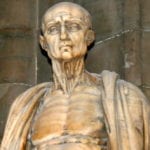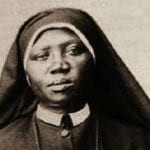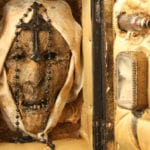 Our World
Our World  Our World
Our World  Pop Culture
Pop Culture 10 Incredible Female Comic Book Artists
 Crime
Crime 10 Terrifying Serial Killers from Centuries Ago
 Technology
Technology 10 Hilariously Over-Engineered Solutions to Simple Problems
 Miscellaneous
Miscellaneous 10 Ironic News Stories Straight out of an Alanis Morissette Song
 Politics
Politics 10 Lesser-Known Far-Right Groups of the 21st Century
 History
History Ten Revealing Facts about Daily Domestic Life in the Old West
 Weird Stuff
Weird Stuff 10 Everyday Products Surprisingly Made by Inmates
 Movies and TV
Movies and TV 10 Actors Dragged out of Retirement for One Key Role
 Creepy
Creepy 10 Lesser-Known Shapeshifter Legends from Around the World
 Our World
Our World 10 Science Facts That Will Change How You Look at the World
 Pop Culture
Pop Culture 10 Incredible Female Comic Book Artists
 Crime
Crime 10 Terrifying Serial Killers from Centuries Ago
Who's Behind Listverse?

Jamie Frater
Head Editor
Jamie founded Listverse due to an insatiable desire to share fascinating, obscure, and bizarre facts. He has been a guest speaker on numerous national radio and television stations and is a five time published author.
More About Us Technology
Technology 10 Hilariously Over-Engineered Solutions to Simple Problems
 Miscellaneous
Miscellaneous 10 Ironic News Stories Straight out of an Alanis Morissette Song
 Politics
Politics 10 Lesser-Known Far-Right Groups of the 21st Century
 History
History Ten Revealing Facts about Daily Domestic Life in the Old West
 Weird Stuff
Weird Stuff 10 Everyday Products Surprisingly Made by Inmates
 Movies and TV
Movies and TV 10 Actors Dragged out of Retirement for One Key Role
 Creepy
Creepy 10 Lesser-Known Shapeshifter Legends from Around the World
Top 10 Saints That Are Not Recognized By Any Church
Ideally, only a church has the power to declare a person a saint. However, certain people—including individuals who might not have existed—and even animals have been declared saints without the approval of any church.
These saints are often recognized for the healing prowess or acts of heroism they exhibited while alive or by miracles they supposedly performed after their deaths. Nevertheless, they are not recognized by any church and, considering the circumstances, some never will be.
10 Jesus Malverde
Saint Of Drug Dealers
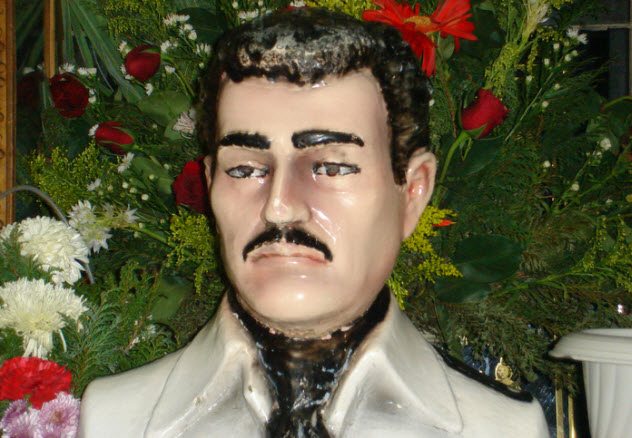
Born in 1870, Jesus Malverde was a railway or construction worker turned bandit who stole from the rich and gave to the poor. While there is no evidence that he ever peddled drugs, he has a large following among drug dealers, prisoners, and poor migrants crossing into the US.
Drug dealers believe that Malverde will save them from the police. The drug dealers often visit his shrine, which is erected on his grave in Culiacan, Mexico, and offer him gifts in exchange for his blessings, assistance, and protection. After successful operations, they return to his shrine with money. Poor migrants going to the US also pray to him and offer him gifts in exchange for a successful crossing into the US.[1]
Malverde’s poster and artifacts have become synonymous with crime and drug dealing, even in the US. These days, any concentration of his statues and tattoos is an indication of criminal activity. Officers of the Houston Police Department often check parking lots for vehicles with his stickers. Courts in California, Kansas, Nebraska, and Texas also accept his amulets as evidence in cases involving money laundering and drug trafficking.
9 Juan Soldado
Saint Of Migrants Crossing The US-Mexico Border
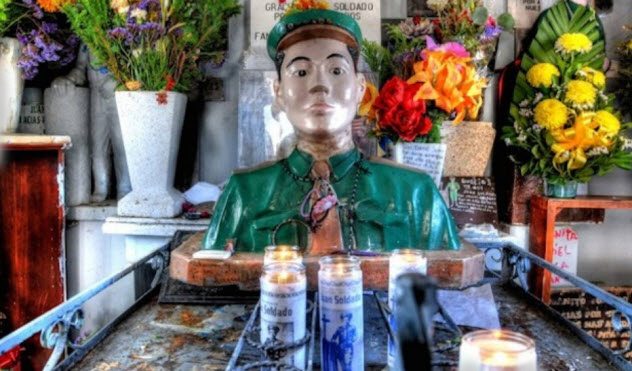
Juan Castillo Morales, who became Juan Soldado (“Juan the Soldier”) after his death, is the patron saint of migrants crossing the US-Mexico border. As a soldier in the Mexican Army, he was serving in the US-Mexico border town of Tijuana when he was arrested on February 14, 1938, for allegedly raping and murdering an eight-year-old girl. His wife claimed that he had committed the crime. Supposedly, he even confessed to it.
It wasn’t like he had any choice. The gruesomeness of the crime infuriated the townspeople, who had formed a mob that was threatening to lynch him and burn down the town. Juan was tried before a hurriedly assembled military court and sentenced to death. He was to be executed by the ley de fugas (“law of fugitives”), which gave him a chance to escape from a firing squad. However, no one ever escaped, including Juan.
Soon after his execution, there were reports of blood coming out of his grave and his soul traveling around and proclaiming his innocence. Soon, people began speculating that Juan was innocent and had been a scapegoat. The real rapist and murderer was said to have been a Mexican general.
Shortly afterward, some people started praying at Juan’s grave and attributing miracles to him. Today, migrants crossing the US-Mexico border stop at his grave and pray for a successful journey. They believe that he will lessen the problems they’ll encounter during their trip.[2]
8 Saint Guinefort
Saint Of Children
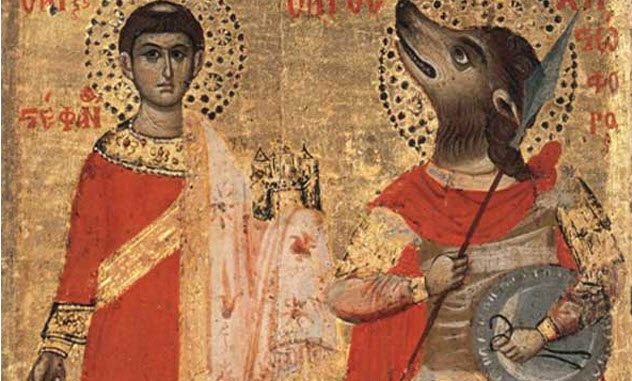
In 13th-century France, a nobleman left his dog, Guinefort, in his home with his infant son. By the time the man returned, the cot was upside down, the baby was missing, and Guinefort’s mouth was stained with blood. The nobleman, thinking that Guinefort had killed his son, slaughtered the dog in a fit of anger.
When he was done, he turned the cot over and found his son alive. Beside his son was a dead snake. It was then that the man realized what had happened. The snake had attacked his son, and Guinefort had killed it while protecting his son. The regretful nobleman buried Guinefort in a well.
A shrine was soon erected over the well, and people brought their babies to be protected or cured of illness. It was around this time that Guinefort became Saint Guinefort, the saint of children.
Some believe that the whole story is hogwash and an elaborate attempt to create a backstory for the shrine where Guinefort is worshiped. Others believe that the story really happened but that the dog was not called Guinefort. It had another name which somehow became mistaken for the name of a human saint.[3]
The Catholic Church was not impressed with the cult that had developed around the dog. In 1262, they destroyed the shrine and exhumed and burned the dog. People were banned from going near the shrine. If anyone was caught doing so, he was threatened with having his property seized and sold. Nevertheless, people still visited the site of the shrine until the 1930s.
7 Miguel Angel Gaitan

Miguel Angel Gaitan was a baby who died of meningitis in Villa Union, Argentina, in 1966, before he turned one. His death went largely unnoticed until 1973 when a heavy rainfall unearthed his coffin.
A cemetery worker found his well-preserved body and built a tomb around his coffin. The walls of the tomb had collapsed by the time the worker returned the next day. He rebuilt it, only to find it collapsed again a day later. It was assumed that Gaitan wanted to be above the ground, so his coffin was left there.
The lid of the coffin was mysteriously found open every morning, even when heavy stones were placed on top of it. Again, it was assumed that Gaitan wanted to be seen, so the opaque lid was replaced with glass. Visitors often bring money, toys, flowers, and clothes when visiting Gaitan’s shrine for blessings, cures, and success.
Lucky visitors could have his mother, Argentina Gaitan, open the coffin so that they can touch his head. Even luckier visitors can have his mother dress him in the clothes they brought. Some Mexican Roman Catholic priests hope that Gaitan will one day become officially recognized as a saint by the Catholic Church.[4]
6 Yevgeny Rodionov
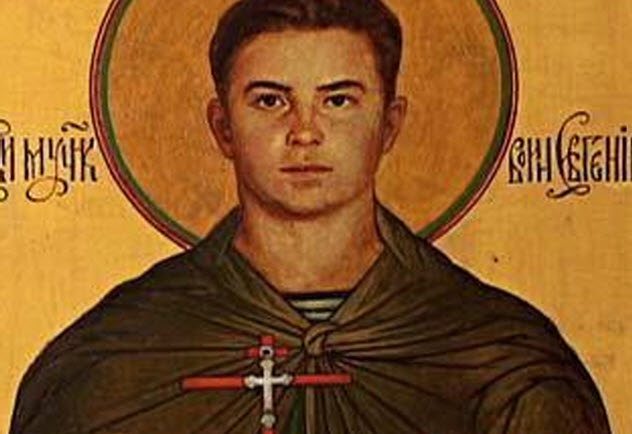
At age 19, Yevgeny Rodionov was one of four Russian soldiers executed by Chechen rebels on May 23, 1996. He was captured while manning a checkpoint alongside the remaining soldiers. All four were held prisoner for 100 days.
Before the soldiers were executed, the rebels offered Rodionov the option of removing his cross, denouncing Christianity, and converting to Islam in exchange for his life. But he turned down the offer. Rodionov became a martyr, hero, and saint after the news of his murder was reported.
His mother paid the rebel who killed Rodionov $4,000 to take her to his grave. She exhumed his body and found that he still had his cross on him. His portrait is popular in Russia. He is often depicted as dressed in a robe, as a medieval knight, or in military fatigues.
He is also shown holding a cross, although he’s sometimes pictured with his rifle. Military veterans pay homage to his grave while people with problems often leave notes asking him for help. Soldiers also kneel and pray in front of his image to seek his protection.[5]
5 Jose Tomas De Sousa Martins
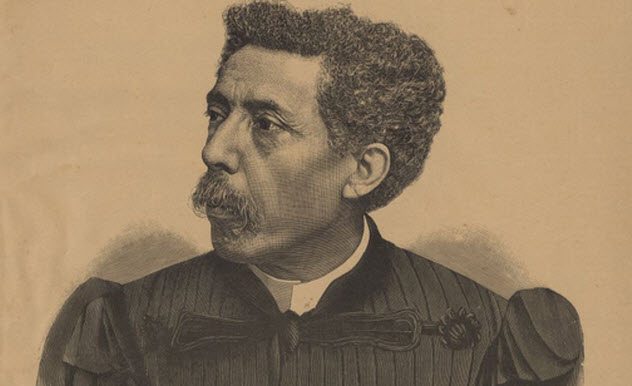
Jose Tomas de Sousa Martins was a Portuguese doctor and pharmacist famous for treating the poor of Lisbon, Portugal. He was most famous for curing people of tuberculosis until he committed suicide after contracting the disease himself in 1897. A cult rose around him after his death, and people soon attributed miraculous cures to him.[6]
A statue erected in his honor in 1904 has become his de facto shrine. There, visitors pray to him and ask him to cure them of illnesses. People who have been healed return to leave flowers and marble plaques at the foot of his statue.
4 Teresa Urrea
Saint Of Cabora

Teresa Urrea is also known as the Little Saint of Cabora. She is said to have mysteriously gained magical healing powers after coming out of a coma at age 16. The first person she cured was a young cowboy who became paralyzed after a horse kicked him in the head at her father’s ranch.
She touched the boy, and he was able to walk again. Tales of her healing ability soon spread throughout Mexico, and people visited the ranch in droves to be cured of their ailments.
When she was 19, her name became the battle cry of several native Mexican tribes who rebelled against dictator Porfirio Diaz. The tribal warriors often shouted “Long Live Santa Teresa, the Little Saint of Cabora” before going into battle. Despite others urging her to do so, Urrea refused to take charge of the rebellion as she was against the use of violence.
That did not stop Diaz from accusing her of instigating the rebellion. He exiled her from Mexico in 1892. Teresa went to Nogales, Arizona, where she continued treating Mexicans who crossed the border to meet with her. She died 14 years later.[7]
3 Gauchito Gil
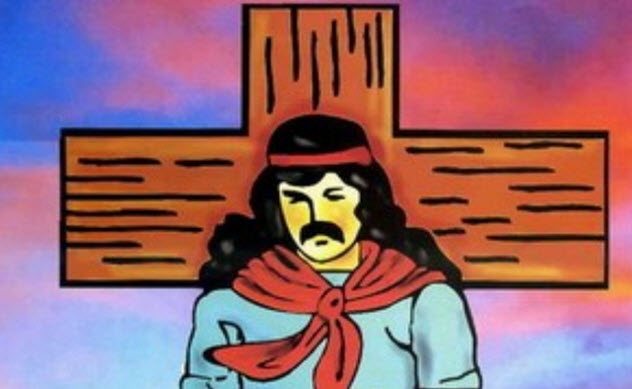
Gauchito Gil was born Antonio Mamerto Gil Nunez in Mercedes, Corrientes, Argentina, in the 1830s. At that time, there were two major political parties in Corrientes: the Reds and the Light Blues.
It was normal for the two to engage in battles. One battle broke out in 1850, and Gil was conscripted to fight for the Reds. He refused to fight and insisted that both parties were brothers. His superiors didn’t share his opinion, so he was labeled a deserter and sentenced to death.
Colonel Velazquez tried to save Gil’s life but was required to get the signatures of 20 notable people. Velazquez got all 20 signatures, and Gil was pardoned. Unfortunately, Gil had already been hanged on January 8, 1878, before news of the pardon reached the executioner.
Before his death, Gil had told the executioner that a pardon was on its way. Furthermore, Gil warned the man that his son would become sick if the execution occurred and the man would have to visit Gil’s grave to ask for forgiveness.
The executioner refused to delay the hanging. True to Gil’s words, the executioner returned home to find his son terribly ill. The man returned to Gil’s grave and prayed to him to cure his son. His son was healed, and the legend was born.
The news spread, and many people began visiting Gil’s grave to be cured of their ailments. The owner of the field soon had enough of the influx of visitors and moved the grave to another location.[8]
But the owner soon took ill and promised to build a sanctuary for Gil if he was cured. He was healed and built the sanctuary as promised. The sanctuary remains in Mercedes today. Every year, the anniversary of Gil’s death is celebrated on January 8.
2 Saint Sarah
Saint Of The Romani
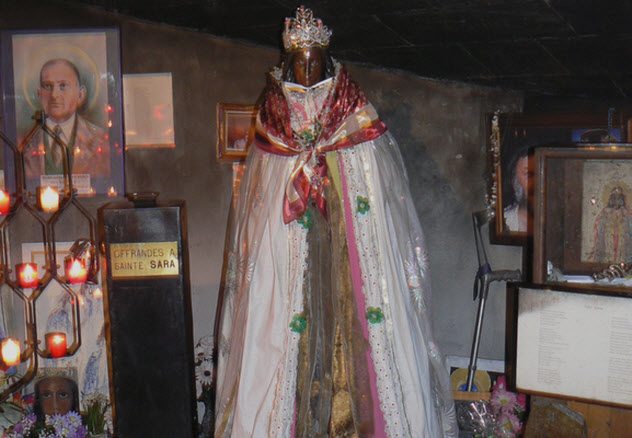
Every year, the Romani gather in Saintes-Maries-de-la-Mer in the Camargue in France to honor Saint Sarah, who is also called Sara-la-Kali (“Sara the Black”). Saint Sarah is believed to be the servant of one of the Three Marys mentioned in the New Testament.
One theory states that she followed the Three Marys after they were expelled from Palestine by the Romans. They were put on a boat without oars or sails and followed the ocean current until they landed in the town now known as Saintes-Maries-de-la-Mer (Saint Marys of the Sea). This theory is disputed because Sarah was not mentioned in the Gospels or in any written account of the journey.
A second theory states that Sarah was a Romani woman living in the Camargue when the Marys arrived and was the first person who converted to Christianity. However, the Romani did not arrive in France until the 15th century, so this theory is also debated.
The Romani don’t mind Saint Sarah’s disputed backstory and honor her each May. Her statue is kept in a crypt in a local church where visitors go to touch her clothes, kiss her, and leave personal items.[9]
1 Santa Muerte
Saint Of Death
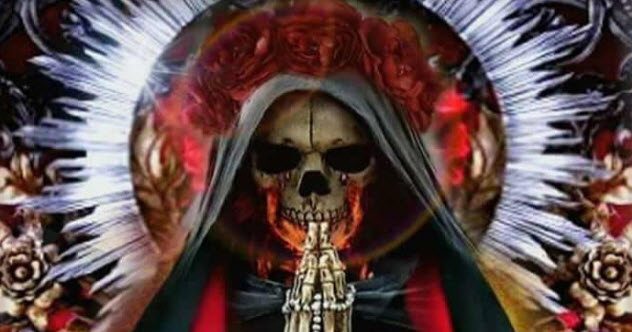
Santa Muerte is recognized as the saint of death in Mexico. She is worshiped by drug traffickers and criminals, although she also has a following among the LGBT community, migrants, single mothers, street children, convicts, drug addicts, and the unemployed. She is believed to be a reincarnation of Mictecacihuatl, the Aztec goddess that oversaw the annual festival of the dead.
Santa Muerte’s temple in Guadalajara is filled with skeletons covered in cloaks. Visitors and worshipers frequently offer the skeletons cigarettes, flowers, and money in exchange for fulfilling their wishes.
Today, Santa Muerte has about 12 million followers around the world and is the fastest-growing religion in South America. This has attracted the attention of the Catholic Church, which has criticized it as pagan worship.[10]
Read more amazing stories about saints on 10 Crazy Things Patron Saints Can Protect You From and Top 10 Truly Badass Saints.

